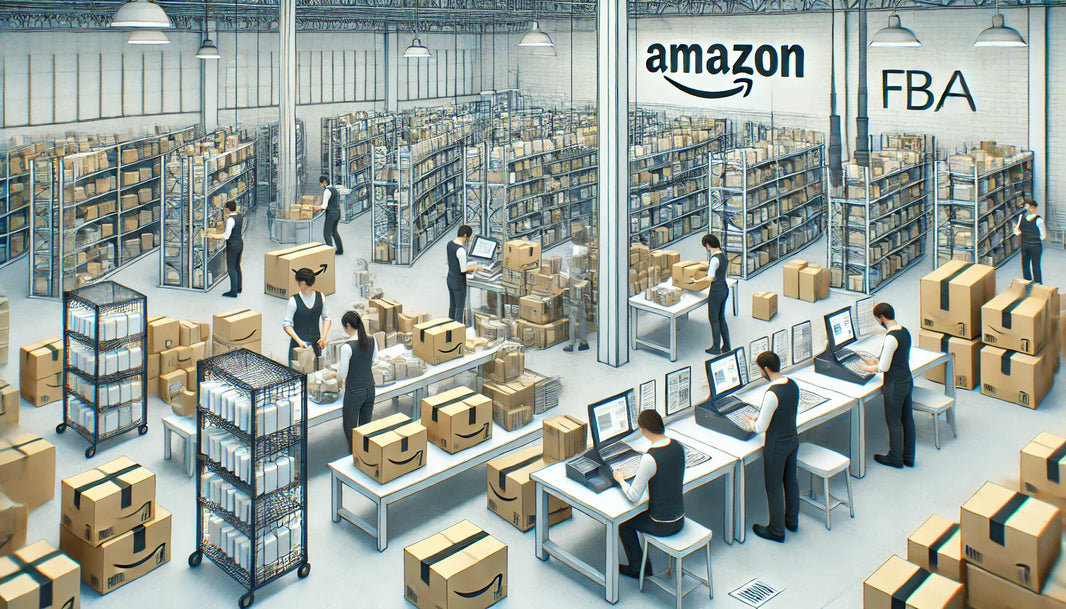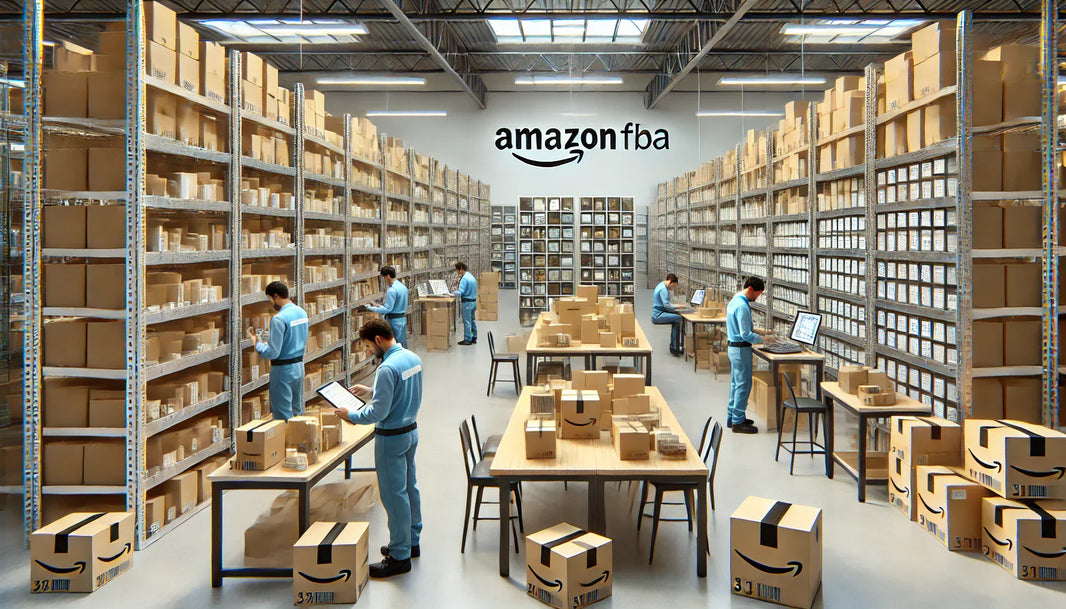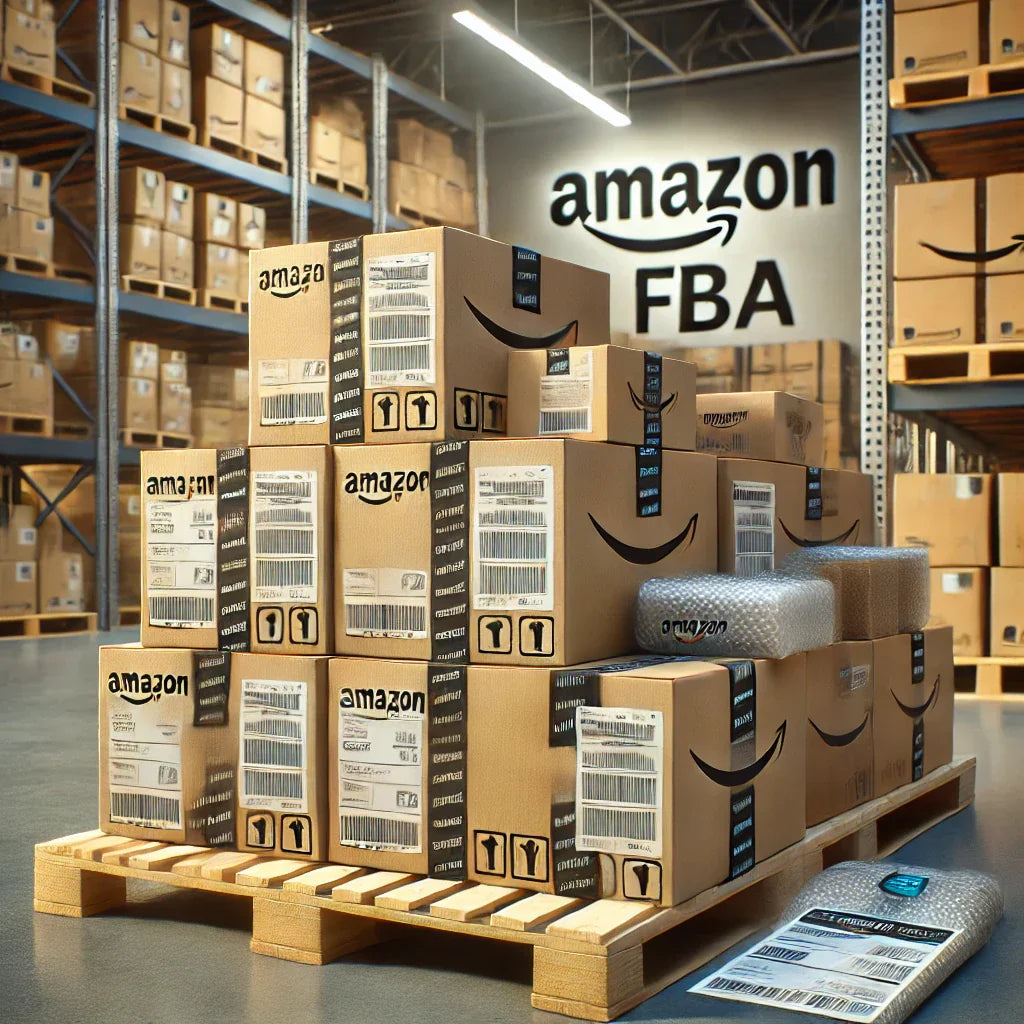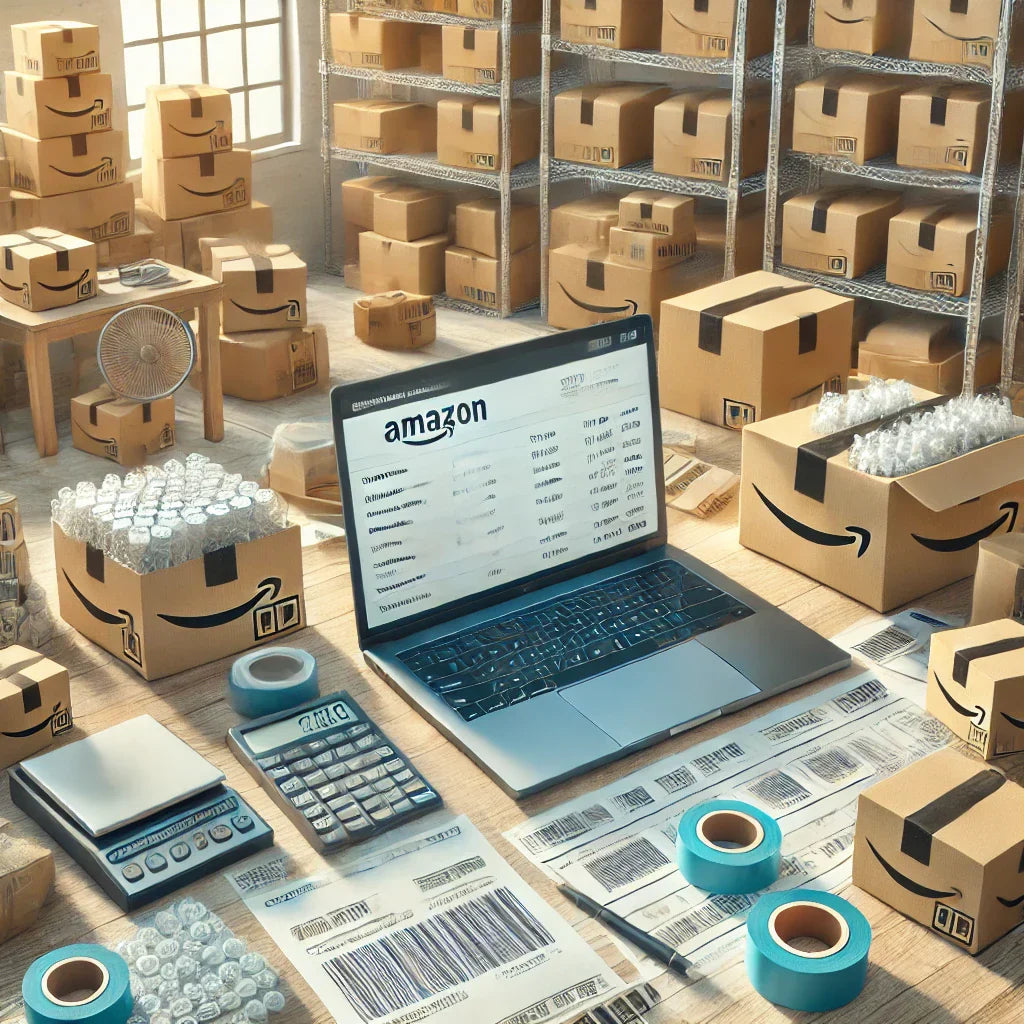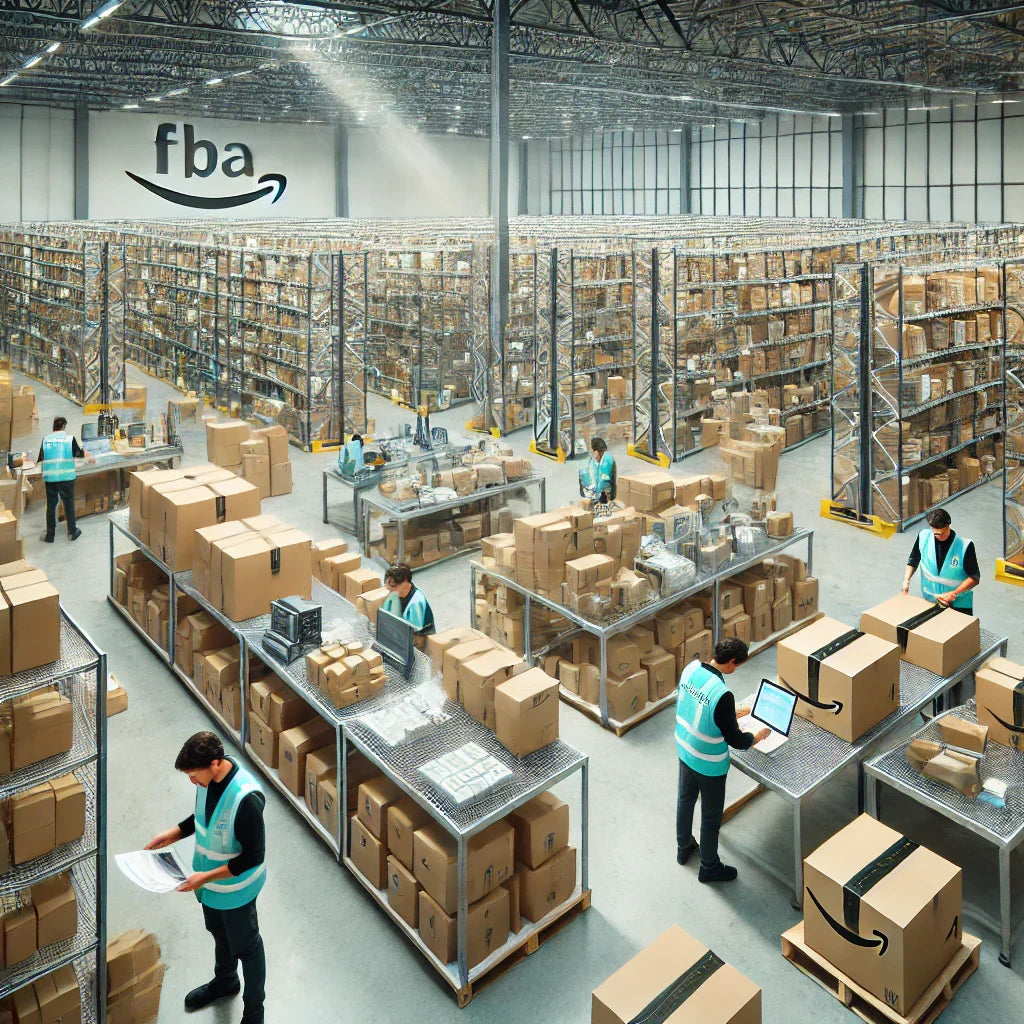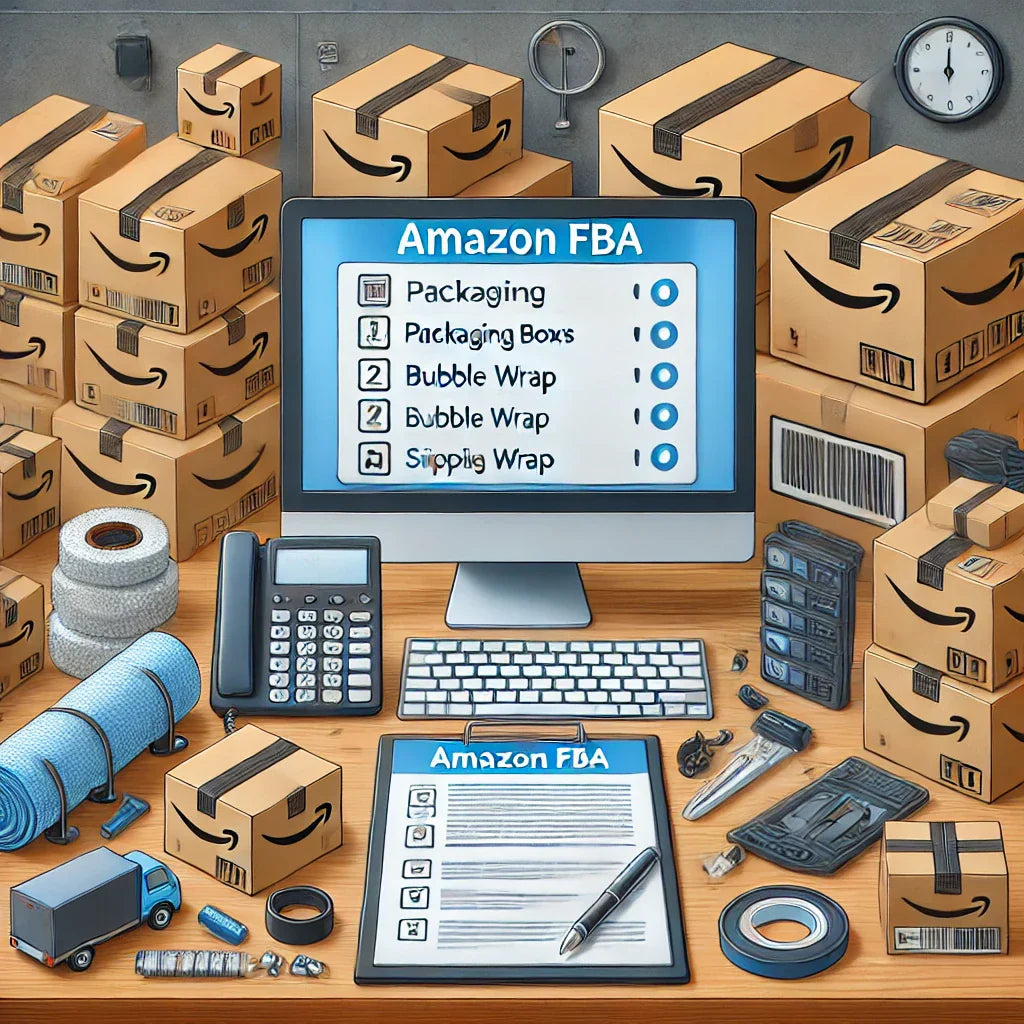In today’s competitive marketplace, businesses are constantly seeking ways to streamline operations and reduce costs while maintaining a high level of service for their customers. One solution that has gained significant traction is partnering with third-party logistics (3PL) distribution centers. These specialized facilities offer companies the ability to outsource key aspects of their supply chain, from warehousing to order fulfillment, allowing businesses to focus more on core operations and growth. Utilizing a 3PL distribution center can lead to greater efficiency, scalability, and enhanced customer satisfaction. In this article, we’ll explore the numerous advantages of using 3PL distribution centers, examining how these partnerships can drive operational improvements, reduce logistical burdens, and provide a strategic edge for businesses across various industries.

Understanding 3PL Distribution Centers
Third-party logistics (3PL) distribution centers serve as essential hubs in the supply chain, providing businesses with a range of services, including inventory management, order processing, and shipping. Unlike in-house warehouses, which require significant investment in staffing, technology, and infrastructure, 3PL providers manage these elements on behalf of businesses. By leveraging industry expertise and established networks, 3PL distribution centers can efficiently manage logistics tasks that are both resource-intensive and time-consuming.
Businesses working with 3PL distribution centers gain access to specialized logistics solutions without needing to invest in their own facilities. This flexibility allows companies to operate in a leaner, more cost-effective manner, ultimately benefiting both business owners and their customers.
Core Advantages of 3PL Distribution Centers
- Cost Savings One of the primary benefits of 3PL distribution centers is cost reduction. Outsourcing logistics functions minimizes the need for businesses to invest in warehousing space, labor, and technology. Additionally, 3PL providers often have volume-based contracts with carriers, which can result in lower shipping rates for clients. This allows businesses to reinvest savings into other critical areas, such as marketing or product development.
- Scalability and Flexibility In an unpredictable business environment, the ability to scale operations quickly is invaluable. 3PL distribution centers allow businesses to adjust their logistics needs to accommodate seasonal fluctuations or unexpected surges in demand. This adaptability is especially crucial for e-commerce businesses, which often experience high variability in order volume. With a 3PL, businesses can seamlessly scale their operations up or down without the risk of excess warehousing or staffing costs.
- Enhanced Focus on Core Competencies By outsourcing logistics, businesses can devote more time and resources to their primary areas of expertise. Instead of managing the intricacies of inventory control or coordinating shipments, businesses can focus on product innovation, customer service, and market expansion. This strategic reallocation of resources can drive growth and innovation, as key personnel are no longer tied down by logistical concerns.
- Advanced Technology and Analytics Many 3PL distribution centers leverage cutting-edge technology to manage inventory, track shipments, and predict customer demand. From automated warehousing systems to real-time tracking, these technologies provide businesses with greater visibility and control over their logistics. Access to sophisticated analytics tools also allows businesses to make data-driven decisions, such as optimizing stock levels or identifying trends in customer demand. By partnering with a 3PL, companies can access technology that would otherwise require substantial investment, staying competitive in a technology-driven marketplace.
- Improved Customer Satisfaction Efficient and reliable logistics are key to providing a positive customer experience. 3PL distribution centers streamline order fulfillment, which can result in faster delivery times and reduced shipping errors. Many 3PL providers offer same-day or next-day delivery options, enhancing customer satisfaction and loyalty. With the logistical expertise of a 3PL partner, businesses can meet or exceed customer expectations, fostering positive brand associations and repeat business.
Strategic Benefits of 3PL Distribution Centers
Beyond operational efficiency, 3PL distribution centers provide strategic benefits that help businesses adapt and grow.
Geographic Reach and Market Expansion
Working with a 3PL provider gives businesses access to a broader geographic reach. Many 3PLs operate multiple distribution centers, allowing businesses to position inventory closer to key markets. This localized approach to logistics can significantly reduce delivery times and shipping costs, making it easier for companies to expand into new markets without the burden of establishing their own distribution networks.
Risk Management and Compliance Support
Managing logistics in-house often involves compliance with various regulations, from customs to environmental standards. 3PL providers have specialized teams that ensure shipments comply with international and domestic regulations, reducing the risk of delays and fines. Additionally, 3PLs are adept at navigating supply chain disruptions, providing contingency plans in cases of natural disasters, strikes, or other unforeseen events. For businesses, this means fewer logistical headaches and a more resilient supply chain.
Access to Specialized Expertise
3PL distribution centers employ teams with extensive experience in logistics management, warehousing, and transportation. This expertise translates to optimized workflows, efficient handling, and improved accuracy in inventory management. For businesses that lack in-house logistics knowledge, a 3PL partner offers valuable insights and strategies that improve efficiency and reduce costs. Additionally, 3PL providers stay current with industry best practices and emerging trends, helping their clients remain competitive in a rapidly evolving landscape.
Green Logistics and Sustainability
In response to growing consumer demand for sustainable practices, many 3PL distribution centers prioritize environmentally friendly operations. From energy-efficient warehouses to optimized shipping routes, 3PL providers implement sustainable logistics practices that reduce carbon footprints. By partnering with an eco-conscious 3PL, businesses can demonstrate a commitment to sustainability, enhancing their brand reputation and appealing to environmentally conscious consumers.
Operational Benefits of Partnering with a 3PL Provider
- Efficient Inventory Management Effective inventory management is crucial for reducing costs and preventing stockouts. 3PL distribution centers use advanced inventory management systems that offer real-time visibility, ensuring accurate tracking and timely replenishment of stock. These systems reduce the risk of overstocking or understocking, helping businesses maintain optimal inventory levels while reducing carrying costs.
- Faster Order Fulfillment The efficiency of a 3PL’s order processing and fulfillment systems enables quicker turnaround times. Automated picking, packing, and shipping processes streamline the fulfillment cycle, allowing businesses to meet consumer demands for fast and reliable delivery. For e-commerce businesses, in particular, this speed can provide a competitive edge in a market where consumers value convenience and quick shipping.
- Reduced Transportation Costs Leveraging a 3PL’s network of carrier partnerships can lead to substantial savings in transportation costs. 3PL providers negotiate shipping rates based on the high volume of shipments they handle, which translates to lower costs for individual clients. Furthermore, 3PLs strategically locate distribution centers to reduce the distance goods need to travel, further minimizing transportation expenses.
- Adaptable Warehousing Solutions Warehousing needs vary greatly depending on factors like product seasonality and sales growth. 3PL distribution centers provide flexible warehousing solutions, allowing businesses to adjust their storage needs without the fixed costs associated with owning or leasing space. This flexibility is particularly beneficial for businesses with seasonal peaks, enabling them to scale storage capacity as needed.
Key Considerations When Choosing a 3PL Provider
Selecting the right 3PL partner is essential to realizing the full benefits of outsourcing logistics. Businesses should consider several factors when evaluating potential 3PL providers:
- Industry Experience: A 3PL with experience in a specific industry will understand unique requirements, challenges, and regulatory considerations.
- Technological Capabilities: Look for providers that use advanced logistics technologies, such as automated systems and real-time tracking, to enhance operational efficiency and transparency.
- Geographic Reach: Ensure the 3PL’s distribution network aligns with your target markets, allowing for efficient delivery times.
- Customer Service: Reliable customer service is crucial for addressing any logistical issues that may arise. A responsive 3PL can help resolve problems quickly, minimizing potential impacts on customer satisfaction.

Long-Term Business Growth with 3PL Partnerships
For businesses seeking to expand, 3PL distribution centers offer the flexibility to adapt to changing market demands. As companies grow, a 3PL partner can provide the infrastructure needed to scale operations without the heavy capital expenditure associated with building new warehouses or expanding in-house logistics capabilities. This scalability allows businesses to pursue growth strategies with confidence, knowing that their logistics operations can handle increased demand.
In addition, the resources and expertise provided by 3PL partners can accelerate entry into new markets, enabling businesses to compete in unfamiliar territories with minimal logistical challenges. As a result, 3PL distribution centers play a vital role in supporting long-term business growth.
The Role of 3PL Distribution Centers in E-commerce Growth
The e-commerce industry has seen tremendous growth over the past decade, and with it, an increased demand for efficient logistics solutions. 3PL distribution centers have become integral to e-commerce businesses looking to keep up with high consumer expectations for fast, reliable, and cost-effective delivery options. For e-commerce businesses, especially those operating online-only, efficient logistics can be the difference between profitability and struggle.
Meeting Consumer Expectations in E-commerce
Today’s online shoppers expect quick delivery times, easy returns, and accurate tracking information. A 3PL distribution center can streamline the order fulfillment process, reducing delays and helping businesses meet these expectations. By using optimized picking and packing strategies, automated sorting, and integration with e-commerce platforms, 3PL providers ensure that orders are processed swiftly and accurately. Furthermore, 3PLs often partner with multiple carriers, offering a range of shipping options, from standard delivery to expedited services, catering to various customer needs.
Cost Management and the Value of Scale in E-commerce
Managing shipping and fulfillment costs is a challenge for many e-commerce businesses, especially as shipping rates fluctuate due to fuel prices, labor shortages, and other external factors. 3PL distribution centers address this challenge through economies of scale. By working with multiple businesses and consolidating shipments, they can negotiate lower shipping rates than an individual company could achieve on its own. This cost advantage enables e-commerce businesses to offer competitive shipping rates or even free shipping, which is a major attraction for consumers.
Integration with E-commerce Platforms
Most 3PL providers integrate seamlessly with popular e-commerce platforms such as Shopify, Amazon, and WooCommerce. These integrations enable real-time updates on stock levels, order tracking, and shipping status, which are essential for providing customers with accurate information. Real-time updates also help prevent overselling or stockouts, maintaining customer satisfaction and operational efficiency.
Specialized Services Offered by 3PL Distribution Centers
One of the major benefits of partnering with a 3PL provider is the access to specialized services that may not be feasible or cost-effective to develop in-house.
Temperature-Controlled Storage and Shipping
Certain industries, such as pharmaceuticals, food, and cosmetics, require temperature-controlled storage and shipping to ensure product quality and compliance with safety standards. 3PL distribution centers that specialize in cold chain logistics have the necessary infrastructure, including refrigerated warehouses and temperature-controlled transportation, to manage these specific requirements. For businesses that operate in temperature-sensitive markets, partnering with a 3PL provider allows them to offer customers high-quality products without the investment in specialized storage and logistics solutions.
Reverse Logistics and Returns Management
Handling product returns efficiently is crucial for customer satisfaction and brand loyalty, particularly in e-commerce. 3PL distribution centers streamline the process of reverse logistics by offering services such as quality control, repackaging, and restocking. This means that when customers return items, they can be quickly processed and either returned to inventory or disposed of according to the company’s policy. Efficient returns management reduces waste and minimizes losses, ultimately improving profitability and customer satisfaction.
Kitting and Assembly
Kitting and assembly services allow businesses to bundle multiple products or components into a single package, creating value-added products. For example, a 3PL provider can combine a group of items into a gift set, bundle various accessories with a primary product, or assemble parts to create a finished product. This service is beneficial for businesses that offer customizable products or seasonal gift sets. By handling these services, 3PL providers can help businesses increase revenue opportunities and enhance their product offerings.
Custom Packaging and Branding
Creating a unique and memorable unboxing experience is essential for building brand loyalty, especially in e-commerce. Many 3PL providers offer custom packaging services, which allow businesses to add branded elements such as logos, colors, and personalized messages to their packaging. This level of customization can enhance the brand experience, making it more likely that customers will remember the brand and make repeat purchases.
How 3PL Distribution Centers Support Global Expansion
For businesses looking to expand internationally, navigating the complexities of international shipping, customs, and regulations can be daunting. 3PL distribution centers provide a solution by offering the expertise and infrastructure needed to manage international logistics efficiently.
Managing International Shipping and Customs
Shipping products across borders involves navigating a maze of customs regulations, taxes, and duties that vary from country to country. 3PL providers with global networks have the expertise to handle these complexities, ensuring that shipments comply with local regulations and arrive at their destinations without delays. They often have dedicated teams to manage customs clearance, handle documentation, and address any compliance issues that may arise, allowing businesses to focus on their international growth without getting bogged down in administrative tasks.
Localized Warehousing and Faster International Delivery
Many 3PL providers operate distribution centers in multiple countries, which allows businesses to store products closer to international customers. This approach reduces shipping times, enabling faster delivery and lower shipping costs. For example, an e-commerce company based in the United States can partner with a 3PL provider that has distribution centers in Europe and Asia, reducing the time it takes to fulfill international orders and enhancing the shopping experience for global customers.
Currency and Language Localization
International transactions can also present challenges related to currency and language. Many 3PL providers offer currency management solutions, helping businesses handle foreign exchange transactions seamlessly. Furthermore, providers often offer customer support in multiple languages, making it easier to address issues or answer questions from international customers. These services help businesses provide a seamless shopping experience, regardless of where their customers are located.
Data-Driven Insights and Continuous Improvement
A key advantage of working with a 3PL provider is the access to data and analytics that can drive continuous improvement in logistics operations. Many 3PL distribution centers use advanced analytics tools that provide businesses with insights into key performance indicators, such as order accuracy, delivery times, and inventory turnover.
Demand Forecasting and Inventory Optimization
One of the most valuable insights that 3PL providers can offer is demand forecasting. By analyzing historical data and trends, 3PLs can predict seasonal fluctuations, helping businesses adjust inventory levels proactively. This proactive approach reduces the risk of stockouts during peak seasons and minimizes the costs associated with overstocking.
Route Optimization and Cost Reduction
Route optimization tools help 3PL providers plan the most efficient delivery routes, reducing fuel costs and delivery times. For businesses with high shipping volumes, this optimization can lead to significant savings over time. Additionally, many 3PL providers use real-time data to monitor route efficiency and adjust plans as needed, further enhancing cost-effectiveness and reducing delays.
Performance Metrics and Continuous Improvement
3PL providers often use metrics such as on-time delivery rates, order accuracy, and return rates to monitor their own performance and identify areas for improvement. These metrics allow businesses to assess the effectiveness of their logistics operations and make data-driven decisions. By continuously monitoring and optimizing logistics performance, 3PL distribution centers help businesses maintain a high standard of service while reducing operational costs.
Enhancing Supply Chain Resilience with 3PL Partnerships
Supply chain disruptions, whether due to natural disasters, economic instability, or global pandemics, can have a significant impact on businesses. Partnering with a 3PL provider can enhance supply chain resilience, allowing businesses to respond more effectively to unexpected disruptions.
Building a Redundant Network
3PL providers often operate multiple distribution centers across different regions, allowing businesses to diversify their warehousing and distribution networks. This redundancy minimizes the risk of service interruptions, as products can be sourced from alternate locations if one distribution center is affected by a disruption. For example, if a natural disaster impacts a warehouse in one region, inventory can still be fulfilled from another location, minimizing the effect on order fulfillment and customer satisfaction.
Real-Time Tracking and Transparency
During times of uncertainty, having real-time visibility into supply chain operations is crucial. Many 3PL providers offer tracking tools that allow businesses to monitor shipments in real time, ensuring that any disruptions or delays can be addressed promptly. This transparency builds trust with customers, who appreciate timely and accurate updates, and allows businesses to manage risks more effectively.
Crisis Management and Contingency Planning
Experienced 3PL providers often have contingency plans in place to address a wide range of potential disruptions. From natural disasters to unexpected surges in demand, these providers have protocols to manage various scenarios, reducing downtime and ensuring continuity of service. Businesses benefit from the expertise and preparation of their 3PL partners, who can manage complex logistics challenges with minimal impact on day-to-day operations.

The Role of 3PL Distribution Centers in Reducing Operational Complexity
Managing logistics in-house can introduce significant complexity for businesses. From handling inventory storage and tracking to ensuring efficient order fulfillment, many moving parts must align seamlessly to keep operations running smoothly. 3PL distribution centers alleviate this complexity by taking on these logistics responsibilities, allowing businesses to operate with fewer administrative burdens.
Inventory Accuracy and Tracking
Maintaining accurate inventory is critical for preventing stockouts, overstocking, and ultimately, customer dissatisfaction. 3PL distribution centers use sophisticated inventory management systems, often incorporating barcode scanning, RFID tracking, and automated reporting to keep precise records. These tools allow businesses to access real-time data on stock levels and product locations, ensuring that inventory accuracy is maintained without the need for extensive manual oversight.
Streamlined Order Processing
Order processing can be a time-intensive aspect of logistics, particularly for businesses experiencing high volumes of orders. 3PL distribution centers streamline this process by employing automated systems that handle everything from order reception to picking, packing, and shipping. Automated systems reduce the chances of human error, ensuring that customers receive the correct products without delay. For businesses, this efficiency means fewer customer complaints and a lower need for costly returns or exchanges.
Customization of Logistics Processes
Every business has unique logistics needs, whether it's handling high-value items, temperature-sensitive products, or items that require special packaging. Many 3PL providers offer customized logistics solutions tailored to specific business requirements. For example, a business in the electronics industry might need anti-static packaging, while a food supplier may require temperature-controlled transport. By working with a 3PL provider, businesses can develop logistics processes that align with their product specifications, reducing damage, returns, and ensuring customer satisfaction.
Labor and Resource Optimization Through 3PL Distribution Centers
Hiring, training, and retaining staff for logistics operations requires significant resources, especially as businesses grow. 3PL providers offer a flexible labor solution, allowing businesses to adapt without the challenges of managing a large in-house team.
Flexibility in Staffing
One of the challenges with in-house logistics is staffing for peak seasons or unexpected surges in demand. Hiring seasonal or temporary staff can be costly and time-consuming. 3PL distribution centers, however, maintain a flexible workforce trained in various aspects of warehousing and logistics. By leveraging this adaptable workforce, 3PLs can quickly scale operations to meet increased demand, providing businesses with the manpower they need without the logistical challenges of hiring and training new employees.
Reduced Overhead and Administrative Costs
Managing an in-house logistics team involves expenses such as salaries, benefits, and training costs, not to mention costs associated with warehouse operations, utilities, and equipment maintenance. By outsourcing logistics to a 3PL provider, businesses can reduce overhead costs associated with warehousing and labor, freeing up resources for core business activities. This reduced administrative burden allows businesses to focus more on product development, marketing, and sales.
Access to Skilled Labor and Expertise
Logistics is a specialized field that requires specific skills in areas like inventory management, transportation, and order fulfillment. Many 3PL providers employ experts with years of experience in these areas, bringing valuable insights and best practices to their clients. For small and medium-sized businesses that may lack in-house logistics expertise, partnering with a 3PL provider gives them access to skilled labor and proven strategies that enhance efficiency and accuracy.
Leveraging Technology in 3PL Distribution Centers for Enhanced Efficiency
One of the major advantages of partnering with a 3PL distribution center is access to advanced logistics technology. From automated systems that streamline warehousing to data analytics that guide decision-making, these technologies give businesses an edge in a highly competitive market.
Warehouse Automation and Robotics
Many 3PL distribution centers use automation and robotics to handle repetitive tasks such as picking, packing, and sorting products. Robotics increase efficiency and reduce the likelihood of human error, which is especially valuable for e-commerce businesses processing high order volumes. Automated guided vehicles (AGVs) and robotic arms can move and sort products faster than manual labor, shortening order processing times and improving accuracy.
Real-Time Data and Inventory Visibility
For businesses, knowing the exact status of their inventory is crucial for effective decision-making. Many 3PL providers offer real-time data access through cloud-based inventory management systems. These systems provide up-to-date information on stock levels, product locations, and pending orders. With real-time visibility, businesses can make informed decisions on stock replenishment, minimizing the risk of stockouts or overstocking.
Predictive Analytics for Demand Forecasting
Predictive analytics, powered by artificial intelligence and machine learning, allow 3PL providers to forecast demand more accurately. By analyzing historical data and identifying trends, 3PLs can predict peak periods and adjust inventory levels accordingly. This capability helps businesses reduce waste, avoid lost sales from stockouts, and better plan for seasonal or promotional demand spikes. For businesses with highly variable sales cycles, predictive analytics can make logistics planning far more effective.
Integration with Enterprise Resource Planning (ERP) Systems
Many 3PL providers integrate their systems with clients’ ERP platforms, creating a seamless flow of information across departments such as sales, accounting, and supply chain management. This integration ensures that all stakeholders have access to accurate data, facilitating better collaboration and streamlined operations. For businesses with complex operations, ERP integration allows for improved communication and reduces the risk of errors due to data discrepancies.
Environmental Impact and Sustainability in 3PL Distribution Centers
As consumer awareness of environmental issues grows, sustainability has become a priority for many businesses. 3PL distribution centers are playing a role in helping companies reduce their environmental impact through sustainable logistics practices.
Eco-Friendly Warehousing Practices
Many 3PL providers have adopted eco-friendly practices in their warehouses, such as using energy-efficient lighting, reducing waste, and implementing recycling programs. These initiatives not only reduce the environmental footprint of warehousing but also align with the sustainability goals of their clients. Some 3PL providers go further by designing green buildings with features like solar panels, efficient HVAC systems, and water conservation measures.
Carbon Footprint Reduction in Transportation
Transportation is a major contributor to greenhouse gas emissions, and 3PL providers are addressing this challenge through route optimization and sustainable fleet management. By using route optimization technology, 3PLs can reduce fuel consumption by finding the most efficient delivery routes. Some providers have also begun adopting electric or hybrid vehicles, further reducing the environmental impact of transportation.
Sustainable Packaging Solutions
Packaging waste is a concern for many businesses, particularly in the e-commerce sector. 3PL providers are increasingly offering sustainable packaging options, such as biodegradable or recyclable materials. By partnering with a 3PL provider that prioritizes eco-friendly packaging, businesses can reduce their waste and appeal to environmentally conscious customers. Sustainable packaging not only reduces environmental impact but also enhances brand reputation by demonstrating a commitment to sustainability.
Circular Logistics and Reverse Supply Chains
The concept of circular logistics, which focuses on reusing, recycling, and repurposing products, has gained traction in recent years. 3PL providers that offer reverse logistics support circular supply chains by managing returns, recycling materials, and disposing of waste responsibly. By participating in circular logistics, businesses can reduce waste, cut costs, and contribute to a more sustainable economy.

The Financial Advantages of Partnering with a 3PL Distribution Center
Outsourcing logistics to a 3PL distribution center can have a significant impact on a business’s bottom line. From reducing operational expenses to optimizing resource allocation, 3PL providers enable businesses to achieve financial efficiencies that contribute to long-term profitability.
Lower Capital Expenditures
Building and maintaining a warehouse requires substantial capital investment, including costs associated with real estate, storage systems, and equipment. By partnering with a 3PL provider, businesses can eliminate these capital expenditures and instead allocate resources to areas that directly impact revenue, such as product development or marketing. This reduced financial burden is particularly advantageous for small and medium-sized businesses that may lack the resources to invest in large-scale warehousing.
Reduced Shipping and Transportation Costs
Shipping costs can fluctuate due to fuel prices, carrier availability, and other factors. Many 3PL providers mitigate these fluctuations by negotiating bulk shipping rates with carriers, allowing businesses to benefit from lower transportation costs. Additionally, 3PLs use their network of distribution centers to reduce the distance products need to travel, further minimizing shipping expenses.
Improved Cash Flow Management
Efficient logistics processes can improve cash flow by reducing the time between order receipt and fulfillment. Faster order processing means businesses receive payments sooner, which can improve liquidity. For businesses with limited cash reserves, this improved cash flow can be instrumental in supporting growth and day-to-day operations.
Minimizing Costs Associated with Inventory
Inventory carrying costs, which include storage fees, insurance, and taxes, can add up quickly. By optimizing inventory levels through demand forecasting and real-time data, 3PL providers help businesses reduce these costs. Efficient inventory management minimizes the need for excess stock, freeing up cash that would otherwise be tied up in unsold inventory.
Enhancing Brand Loyalty and Customer Retention through 3PL Partnerships
In today’s market, customer satisfaction is key to building brand loyalty and retaining clients. A reliable 3PL provider can help businesses deliver a consistent and positive customer experience, which can foster loyalty and lead to repeat purchases.
Fast and Reliable Delivery
With the rise of e-commerce, consumers expect fast and reliable delivery. By partnering with a 3PL distribution center, businesses can offer customers a range of delivery options, from standard shipping to expedited service. Reliable delivery times and prompt communication about order status enhance customer satisfaction, encouraging repeat business and positive reviews.
Seamless Returns and Exchanges
A smooth returns process is crucial for maintaining customer satisfaction, particularly in industries like fashion and electronics where returns are common. 3PL providers that offer reverse logistics services can handle returns efficiently, ensuring that customers receive quick refunds or exchanges.
Building Competitive Advantage with 3PL Distribution Centers
In competitive markets, businesses must leverage every available resource to differentiate themselves. 3PL distribution centers play a vital role in helping companies build and maintain competitive advantages by optimizing logistics and enhancing customer satisfaction.
Improving Time-to-Market
For businesses with rapidly evolving product lines, getting products to market quickly is crucial. 3PL distribution centers reduce lead times by streamlining warehousing, inventory management, and shipping processes. By reducing the time between production and availability, businesses can respond faster to market demands, launch products more effectively, and capture early adopters. Quick time-to-market is especially advantageous in industries where consumer trends shift frequently, such as fashion, electronics, and consumer goods.
Enhancing Agility in Product Launches
Product launches often require meticulous planning, coordination, and logistics support. With the help of 3PL providers, businesses can manage the logistical aspects of product launches with ease. Many 3PL providers offer dedicated launch support, including pre-launch inventory storage, packaging, and expedited delivery to retail partners. This logistical agility allows companies to introduce new products across multiple locations simultaneously, ensuring a consistent launch experience.
Strengthening Customer Loyalty with Superior Service
Customer loyalty hinges on consistent, reliable service. A 3PL distribution center enables businesses to meet customer expectations for fast, accurate order fulfillment. By delivering products on time and providing easy tracking options, businesses reinforce trust and satisfaction, key factors in building long-term customer relationships. Additionally, many 3PL providers offer customer service support, helping to resolve shipping-related issues, which can be instrumental in ensuring a smooth post-purchase experience.
Security and Risk Management Benefits with 3PL Distribution Centers
Security and risk management are often overlooked aspects of logistics, yet they are essential for protecting inventory, ensuring compliance, and maintaining customer trust. 3PL distribution centers invest heavily in security and risk management systems, helping businesses safeguard their assets and operate within regulatory guidelines.
Securing Inventory with Advanced Surveillance and Monitoring
Warehousing operations require robust security measures to prevent theft, tampering, and unauthorized access. 3PL providers use advanced security measures, including surveillance cameras, access control systems, and regular audits, to protect their clients’ inventory. These security protocols provide businesses with peace of mind, knowing their products are stored in secure, well-monitored environments.
Ensuring Compliance with Industry Standards and Regulations
Many industries have strict regulations governing the storage, handling, and transportation of goods. For example, businesses dealing with food, pharmaceuticals, or hazardous materials must comply with specific safety and storage requirements. 3PL providers specializing in these industries maintain compliance with relevant regulations, reducing the risk of fines or reputational damage for their clients. This compliance support is particularly beneficial for businesses that may lack the resources to manage regulatory requirements independently.
Protecting Data Privacy in Logistics Operations
With the increase in online transactions, data privacy has become a crucial consideration in logistics. 3PL providers that handle order fulfillment often manage sensitive customer information, such as addresses and contact details. To protect this information, many 3PLs employ data encryption, secure networks, and strict access controls. This commitment to data privacy safeguards customer information and helps businesses comply with data protection regulations, building trust with consumers.
Risk Mitigation in Transportation and Delivery
Unforeseen events, such as extreme weather, transportation strikes, or supply chain disruptions, can impact delivery schedules and customer satisfaction. Experienced 3PL providers are equipped to manage these risks through contingency planning and alternative delivery solutions. For instance, many 3PLs have partnerships with multiple carriers, allowing them to reroute shipments or use alternate modes of transport if primary options are unavailable. By mitigating risks in transportation, 3PL providers help businesses maintain reliable service even in the face of unexpected challenges.
Case Studies: Real-World Examples of 3PL Success
To illustrate the tangible impact of 3PL partnerships, let’s examine a few case studies that demonstrate how businesses across various industries have benefited from 3PL distribution centers.
Case Study 1: An E-commerce Apparel Brand Scaling Up for Seasonal Demand
A fast-growing e-commerce apparel brand was struggling to keep up with the surge in demand during peak seasons, particularly around Black Friday and holiday sales. Managing warehousing, staffing, and order fulfillment in-house was proving to be costly and inefficient. By partnering with a 3PL distribution center, the brand gained access to a scalable workforce, optimized warehousing space, and streamlined order processing. During peak seasons, the 3PL provider adjusted its staffing and storage capacity to meet the increase in demand, ensuring that orders were fulfilled on time without delays. As a result, the brand was able to increase its sales during these high-demand periods, reduce overhead costs, and enhance customer satisfaction through reliable order fulfillment.
Case Study 2: A Health and Wellness Company Expanding Internationally
A health and wellness company aimed to expand into European and Asian markets but faced challenges with international logistics, including customs regulations and shipping times. The company partnered with a 3PL provider with an established network of distribution centers in these regions. By leveraging the 3PL’s knowledge of international shipping regulations and its network of localized warehouses, the company reduced its shipping times and avoided customs-related delays. The 3PL’s localized approach enabled the brand to offer faster delivery to its international customers, allowing it to build a strong presence in new markets without the complexity of managing its own international logistics.
Case Study 3: A Specialty Food Manufacturer Ensuring Temperature-Controlled Logistics
A manufacturer of specialty foods needed temperature-controlled storage and transport to maintain product quality. The company partnered with a 3PL distribution center specializing in cold chain logistics. The 3PL provided temperature-controlled warehousing and ensured that all shipments were maintained at optimal temperatures during transportation. With the help of the 3PL, the company could focus on expanding its product line, knowing that its logistics partner would handle the complex requirements of cold chain logistics. This partnership allowed the manufacturer to expand its distribution to retailers across the country while maintaining product quality, which was critical to its brand reputation.

Conclusion: The Future of 3PL Distribution Centers in Business
As businesses continue to evolve, the role of 3PL distribution centers will become even more significant. These partnerships provide companies with the tools, technology, and expertise needed to compete in a fast-paced, global market. From cost savings and scalability to specialized services and data-driven insights, 3PL providers offer a comprehensive solution to the logistical challenges businesses face today. By leveraging the strengths of a 3PL provider, businesses can build a more resilient, customer-focused, and efficient supply chain, paving the way for sustained growth and success.
Read More
- Understanding Distribution Centers: Core Functions and Benefits
- The Role of Regional Distribution Centers in Modern Supply Chains
- A Closer Look at Academy Distribution Centers: Key Features and Operations
- DHL Distribution Centers: Global Logistics at Scale
- How Distribution Centers Enhance Efficiency in Warehousing and Logistics
- Choosing the Right Distribution Center for Your Business Needs


